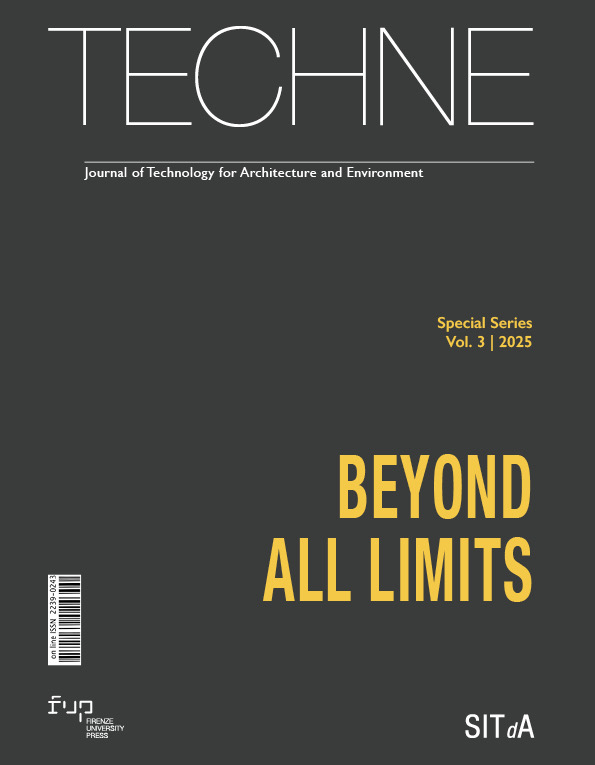Published 2025-07-31
Keywords
- Resilience,
- community resilience,
- Cultural Heritage,
- Heritage Resilience,
- Resilience Planning
How to Cite
Copyright (c) 2025 Deniz Altay-Kaya, Damla Yeşilbağ

This work is licensed under a Creative Commons Attribution 4.0 International License.
Abstract
As a container of accumulated experiences, cultural heritage connects past, present and future by transmitting knowledge to future generations through tangible/intangible assets. With this potential, cultural heritage can significantly contribute to community resilience, yet available resilience strategy documents place limited emphasis on cultural heritage. Based on this observed lack of systematic consideration, this paper analyses the resilience strategy documents presented in the 100 Resilient Cities Programme, and discerns six approaches towards cultural heritage, namely ignorance, economic development tool, identity construction, social component, physical integration tool, and comprehensive consideration. The paper discusses further ways cultural heritage can enhance community resilience.
Downloads
References
- Adger, W.N. (2000), “Social and ecological resilience: Are they related?”, Progress in Human Geography, vol. 24, n. 3, pp. 347–364. DOI: https://doi.org/10.1191/030913200701540465
- Altay-Kaya, D. (2021), “Zorunlu Göç ve Dayanıklılık Planlaması: Türkiye’nin Suriye Zorunlu Göçü Deneyimi” (Forced Migration and Resilience Planning: Turkey’s Syrian Forced Migration Experience), METU Journal of the Faculty of Architecture, vol. 38, no. 2, pp.115 – 44. Available at: https://doi.org/10.4305/metu.jfa.2021.2.2 DOI: https://doi.org/10.4305/METU.JFA.2021.2.2
- Altay-Kaya, D. (2019), “Integrating the Resilience Perspective into the Turkish Planning System: Issues and Challenges”, in Ö.B. Özdemir-Sari, S.S. Özdemir & C.N. Uzun (Eds.), Urban and Regional Planning in Turkey, Springer: Dordrecht, pp.213-234. DOI: https://doi.org/10.1007/978-3-030-05773-2_11
- Beatley, T. (2009), Planning for coastal resilience: Best practices for calamitous times, Island Press, Washington.
- Berkes, F. and Ross, H. (2013), “Community resilience: Toward an integrated approach”, Society & Natural Resources, vol. 26, n. 1, pp. 5-20. DOI: https://doi.org/10.1080/08941920.2012.736605
- Berkes, F., Colding, J. and Folke, C. (Eds.), (2003), Navigating social-ecological systems: Building resilience for complexity and change, Cambridge University Press, Cambridge.
- Council of Europe. (2005), Framework convention on the value of cultural heritage for society, Faro, Portugal. Available at: https://rm.coe.int/1680083746 (Accessed on: 01/12/2024).
- Eraydın, A. and Taşan-Kok, T. (Eds.), (2013), Resilience thinking in urban planning, Springer, Dordrecht. DOI: https://doi.org/10.1007/978-94-007-5476-8
- Fabbricatti, K., Boissenin, L., and Citoni, M. (2020), “Heritage community resilience: Towards new approaches for urban resilience and sustainability”. City, Territory and Architecture, vol. 7, n. 1, pp. 1-20. DOI: https://doi.org/10.1186/s40410-020-00126-7
- Foster, K.A. (2006), A case study approach to understanding regional resilience. Available at: https://escholarship.org/uc/item/8tt02163 (Accessed on 01/12/2024).
- Holtorf, C. (2018), “Embracing change: How cultural resilience is increased through cultural heritage”, World Archaeology, vol. 50, n. 4, pp. 639-650. DOI: https://doi.org/10.1080/00438243.2018.1510340
- Iavarone, R., Alberico, I., Gravagnuolo, A. and Esposito De Vita, G. (2019), “The role of cultural heritage in urban resilience enhancement”, in F. Calabro et al. (Eds.) New Metropolitan Perspectives, Springer, Cham, pp. 369-377. Available at: https://doi.org/10.1007/978-3-319-92102-0_39 (Accessed on 01/12/2024). DOI: https://doi.org/10.1007/978-3-319-92102-0_39
- ICOMOS (1994), The Nara Document on Authenticity. Nara.
- ICOMOS (1999), The Burra Charter: The Australia ICOMOS Charter for Places of Cultural Significance. Australia.
- ICOMOS (2008), Québec Declaration on the Preservation of the Spirit of Place. Québec.
- Jigyasu, R. (2019), “Does cultural heritage make more resilient cities?”. Available at: https://www.urbanet.info/does-cultural-heritage-make-more-resilient-cities/ (Accessed on 01/12/2024).
- Jigyasu, R. (2013), “Heritage and resilience: Issues and opportunities for reducing disaster risks”. Available at: http://icorp.icomos.org/wp-content/uploads/2017/10/Heritage_and_Resilience_ Report_for_UNISDR_2013.pdf (Accessed on 01/12/2024).
- Labadi, S., Giliberto, F., Rosetti, I., Shetabi, L. and Yildirim, E. (2021), Heritage and the sustainable development goals: Policy guidance for heritage and development actors, ICOMOS, Paris. Available at: https://openarchive.icomos.org/id/eprint/2453/ (Accessed on 01/12/2024).
- Lu, P., and Stead, D. (2013), “Understanding the notion of resilience in spatial planning: A case study of Rotterdam, The Netherlands”. Cities, vol. 35, pp. 200–212. DOI: https://doi.org/10.1016/j.cities.2013.06.001
- Maclean, K., Cuthill, M. and Ross, H. (2014), “Six attributes of social resilience”, Journal of Environmental Planning and Management, vol. 57(1), pp. 144-156. DOI: https://doi.org/10.1080/09640568.2013.763774
- Mason, R. (2002), Assessing Values in Conservation Planning: Methodological Issues and Choices. In M. de la Torre (Ed.), Assessing the Values of Cultural Heritage (pp. 5–30). Los Angeles: The J. Paul Getty Trust. https://doi.org/10.1353/at.2004.0007 DOI: https://doi.org/10.1353/at.2004.0007
- Nelson, D. R., Adger, W. N. and Brown, K. (2007), “Adaptation to environmental change: Contributions of a resilience framework”. Annual Review on Environment and Resources, vol. 32, pp.395-419. DOI: https://doi.org/10.1146/annurev.energy.32.051807.090348
- Poulios, I. (2014), Discussing strategy in heritage conservation: Living heritage approach as an example of strategic innovation. Journal of Cultural Heritage Management and Sustainable Development, 4(1), 16–34. https://doi.org/10.1108/JCHMSD-10-2012-0048 DOI: https://doi.org/10.1108/JCHMSD-10-2012-0048
- Smith, L. (2006), Uses of Heritage. Routledge. DOI: https://doi.org/10.4324/9780203602263
- UNDRR (2015), Sendai framework 2015–2030, Sendai, Japan. Available at: https://www.undrr.org/publication/sendai-framework-disaster-risk-reduction-2015-2030 (Accessed on 01/12/2024).
- UNESCO (n.d.), Culture. UNESCO. https://www.unesco.org/new/en/culture/
- UNESCO (2013), The Hangzhou declaration: Placing culture at the heart of sustainable development policies, Hangzhou, China. Available at: https://unesdoc.unesco.org/ark:/48223/pf0000221238 (Accessed on: 01/12/2024).
- UNESCO (2015), Transforming our world: The 2030 agenda for sustainable development. Available at: https://documents.un.org/doc/undoc/gen/n15/291/89/pdf/n1529189.pdf (Accessed on: 01/12/2024).
- RCN (2019), 100 Resilient Cities. Available at: https://www.rockefellerfoundation.org/100-resilient-cities/ (Accessed on: 01/12/2024)
- RCN (2024), Resilient Cities Network. Available at: https://resilientcitiesnetwork.org/network/ (Accessed on: 01/12/2024)






